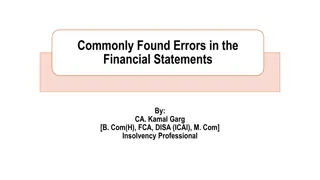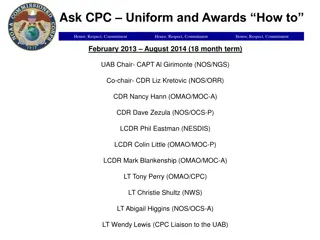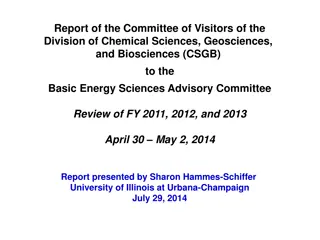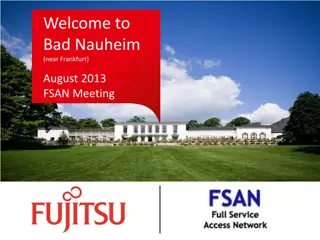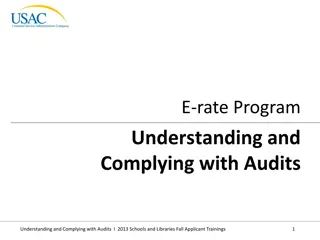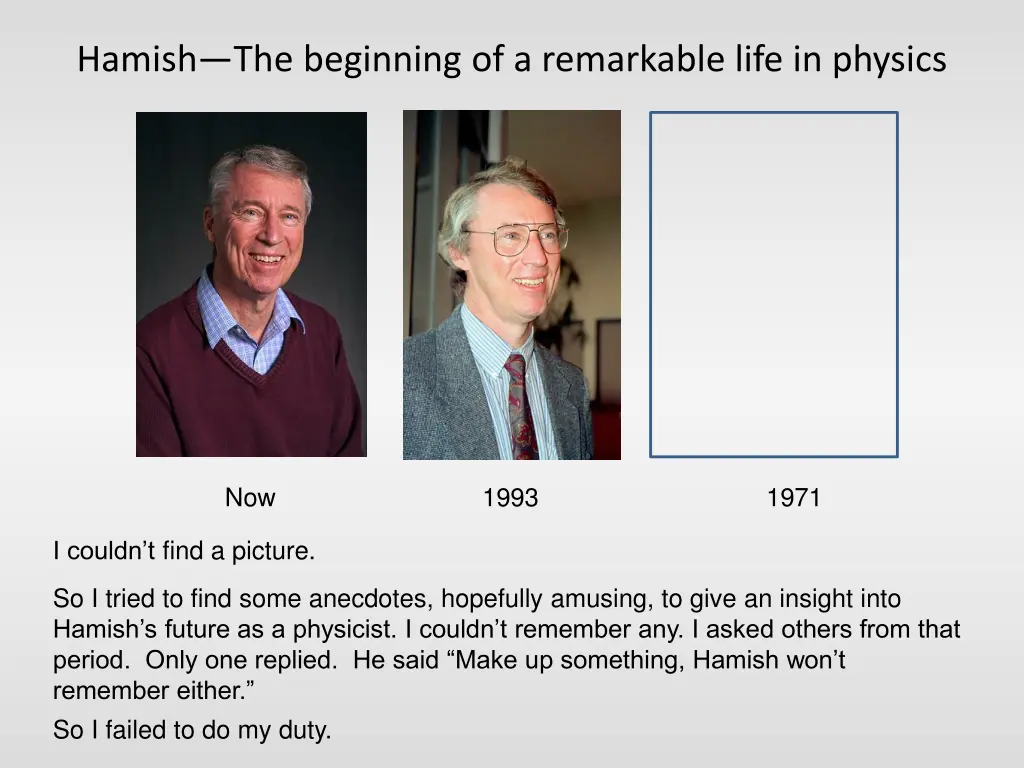
Hamish: A Physicist's Remarkable Journey in Nuclear Physics and Neutrino Measurements
Join Hamish on a captivating journey through his groundbreaking work in nuclear physics at MSU, from his early experiments to later accomplishments in neutrino measurements at LANL. Explore his significant contributions to our understanding of elements and astrophysical processes, showcasing his talent and passion for physics over four decades.
Download Presentation

Please find below an Image/Link to download the presentation.
The content on the website is provided AS IS for your information and personal use only. It may not be sold, licensed, or shared on other websites without obtaining consent from the author. If you encounter any issues during the download, it is possible that the publisher has removed the file from their server.
You are allowed to download the files provided on this website for personal or commercial use, subject to the condition that they are used lawfully. All files are the property of their respective owners.
The content on the website is provided AS IS for your information and personal use only. It may not be sold, licensed, or shared on other websites without obtaining consent from the author.
E N D
Presentation Transcript
HamishThe beginning of a remarkable life in physics Now 1993 1971 I couldn t find a picture. So I tried to find some anecdotes, hopefully amusing, to give an insight into Hamish s future as a physicist. I couldn t remember any. I asked others from that period. Only one replied. He said Make up something, Hamish won t remember either. So I failed to do my duty.
At MSU Hamish arrived at MSU as a Research Associate on June 1, 1971 and we collaborated on his first published MSU experiment The question: was 64Ge was stable? Presumed to be important in the production of elements above the iron peak but many searches had failed to find it. Our approach: 64Zn(3He, 3n)64Ge and observe gamma decays to 64Ga. Problem: Huge background Solution: Bombard 64Zn, transfer to lab, dissolve 64Zn in HCl solution, Vacuum distill volatile GeCL4, start counting 25 sec after end of bombardment. Succeed, use lifetime to limit mass RGHR and SMA, PRL 29, 130 (1972)- 10 July issue
Later at MSU That experience persuaded us that Hamish had come to MSU with the characteristics of a talented faculty member already in hand; he was promoted to Asst. Prof. in 1972 and to Professor in 1981. In his vitae, Hamish enumerates his MSU research activities First observation of an isobaric quintet of states in nuclei Experiments on parity violation, nuclear astrophysics and nuclear reactions. Whether 6Li is mainly primordial or a relatively recent product of astrophysical processes was settled in favor of the latter by a sensitive measurement of the capture of deuterium by helium-4. His nuclear astrophysics work included A 1973 PRC estimate of the flux of solar neutrinos from 7Be(p, ) reactions in the sun, an interest presaging much of his later work A measurement of the pair decay branch of the Hoyle state that halved the uncertainty in the Triple Alpha Rate. Some of us had been involved with three of the other measurements necessary to determine this rate. But this one seemed too hard: the branch was about 6 x 10-6.
How to do it Observe decay pairs in coincidence with inelastic protons forming the Hoyle state. The pair to proton ratio gives the branch Segment the pair counter to reduce the gamma background. Works = (6.0 1.1) x 10-6 a factor of 2 better than a previous much more complicated expt Robertson, Warner, Austin, PRC 1977
He Left In 1982 Hamish took a position at LANL to work on neutrino measurements as you have heard. His time at MSU was, I hope, a win-win situation. He certainly helped build MSU s reputation in nuclear physics. And I like to think his experience at the Cyclotron Lab was important to his future. It s a pleasure to congratulate Hamish on his contribution to physics and our understanding of neutrinos over the past forty years.
Neutrino Process and Production of 7Li, 11B, 19F, 138La, 180Ta Neutrino Process in core-collapse supernovae: In explosion following core-collapse ~1058 s bombard the stellar envelop and excite its nuclei Charged ( , e-) and neutral current ( ) interactions important Products of these interactions are further processed in hot environment
Where Neutrino Process Takes Place 7Li 11B 19F 138La 180Ta
Model SNII Calculations For 15, 20, 25 Msun stars Evolve to core collapse-KEPLER Anders-Grevasse and Lodders abundances Simulate ensuing explosion: Piston at the base of the O-burning shell (S=4k/Baryon) imparts 1.2 Bethe to the explosion products Neutrino reactions from shell model and RPA Decay branching ratios, reactions from the Smoker Code, ala Rauscher et al, Ap.J. 576, 323 (2002) Neutrino spectra 3 x 1053 ergs (5 x 1052 each species) Exponential decrease 3 sec scale Fermi Dirac Spectra T=4 MeV, electron neutrinos T=6 MeV mu, tau neutrinos. -Process, important for 180Ta Vary Helium burning rates by 2 Triple alpha = 12C( ) =
What is made Fraction of solar system abundance of the Neutrino Nuclei 7Li 0.10- 0.15 11B 2-5 (excluding Cosmic Ray production) 19F 0.25-0.8 138La 0.25-0.6 180Ta comparable (problem-don t distinguish isomeric state) The ranges are from 2 uncertainties in the helium burning rates for the Triple Alpha Process and 12C( ) Reactions For 11B and 10x 7Li Ordinates: Production factors compared to that for 16O Abscissas: Range of 3 rates (left) and 12C( ) rates (right)
What is special about 11B? Its source is well understood Observed isotopic ratio 11B/10B = 4.045 Only core collapse supernovae and cosmic rays (GCR) make 11B Neutrino process ratio 11B/10B ~ 50 Galactic cosmic rays11B/10B = 2.2-2.5 (or slightly higher?) Low energy cosmic rays: Unobserved, inefficient These facts fix the fraction of 11B made in SN at 40% SN Production
What Might Overproduction Tell Us? Some of the possibilities An opportunity to learn about the properties of supernova neutrinos Average number of s from proto n-star smaller than assumed. Presumably there must be variations in explosion energy corresponding to variations in neutron star masses spectrum less hard than assumed-higher T , higher yield. Most of nuclear input theoretical, computations not perfect For this to have chance to happen, SNII model needs improvement so far a preliminary study using by product results from a study with another purpose A First Step Address issue of sensitivity of 11B production to the poorly known Helium burning rates. Use of Effective Rates
Effective Helium Burning Rates What/Why effective rates? Supernova evolution codes imperfectly describe the physics, especially convection. Convection structure, nucleosynthesis affected by Helium Burning rates These rates are poorly known Boyes (UG student of Stan Woosley) adjusted 12C( ) rate to better reproduce production of selected medium mass nuclei. Many model studies use Boyes effective rate, unpublished, but often quoted, for example, in Woosley & Heger, Phys. Rep. 442, 269 (2007). Assumed to be better than using the measured rate As SN simulations improve effective and actual interactions will converge. Analogy to Shell model calculations Adjust residual N-N interactions to better fit energies of low lying levels. Use to predict other properties: spectroscopic factors, weak strength, etc.. Surprisingly successful
A Better effective rate (Tur, Heger, sma ApJ 671 (2007)) Improve Boyes Procedure Larger star set: 13, 15, 17, 19, 21, 23, 25, 27 Msun Include explosive processing not done by Boyes, Important Procedure Calculate weighted average production for 2 range of the 12C( ) rate Find rate which best reproduces observation Quantify: minimum rms deviation of selected abundances About 1.3 times Buchmann rate Problem: Had to choose Triple alpha rate Its uncertainties are also important
An Effective rate: Triple Alpha---12C( ) Correlations West, Heger,SMA, ApJ 769 2/1 (2013), Procedures similar to previous, BUT 12, 13, 14, 15, 16, 17,18, 20, 22, 25, 27,30 Msun; Lodders 2010 Abundances Explosion energy = 1.2 Bethe, 3x1053 ergs in neutrinos Triple Alpha--12C( ) rate matrix covering 2 in each rate 176 Points Total of 2112 SN simulations Colored dots: Tur, Heger, SMA, ApJ 2007
Production Factors Plot standard deviation in Production factors (see color Code) for Int. Mass: 16,18O, 20Ne, 23Na, 24Mg, 27Al, 28Si, 32S, 36Ar, 40Ca S-only (corrected): (70Ge, 76Se, 80Kr, 82Kr, 86Sr, 87Sr Line is best fit (by eye) R ,12= 1.0 R3 + (0.35 0.2).
Implications for 11B Production Procedure Choose 10 equally spaced points along the fit line Evaluate 11B/16O at these points Robust prediction of 11B/16O Some (most?) of remaining variation from binning effects 11B/16O 1.20 1.00 11B/16O 0.80 11B/16O Linear (11B/16O) 0.60 0.40 0.20 0.00 0.60 0.80 1.00 1.20 R_3a Compare to Previous Much larger variation. This shows that best value of one of helium burning reactions depends on the value of the other
Supernova Model Improvements Improved + 12C cross sections: L>0 from Shell Model (replace RPA) Also plan to study using (6Li, 6Li* ) at Osaka (with Zegers, Tamii) 3.56 0+ T=1 Double excitation:6Li and target 2.18 6Li detected in spectrometer Coincidence with 3.56 MeV Gamma Guarantees S= T=1 (6Li, 6Li ) 0.0 1+ T=0 6Li Improvements in cross sections processing 11C, 11B. Sensitivity studies using KEPLER Improved Hauser Feshbach input Sensitivity studies of 11B production to Total energy release (99% s), Kinetic energy of explosion Improved treatment of convection informed by 3D simulations, ala Arnett et al
Some References Woosley, Hartmann, Hartman, Haxton, ApJ 356, 272 (1990) Heger, Kolbe, Haxton, Langanke, Martinez-Pinedo, Woosley, Phys. Lett. 606, 258 (2005) Austin, Heger, Tur, Phys. Rev. Lett. 106, 152501 (2011) West, Heger, Austin, ApJ 769 2/1 (2013)







